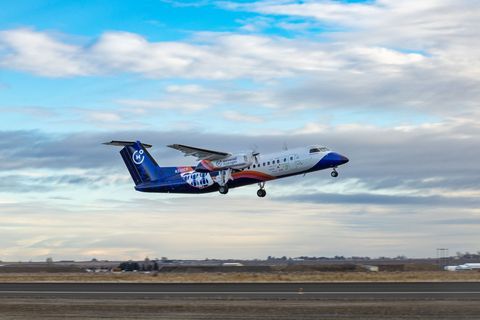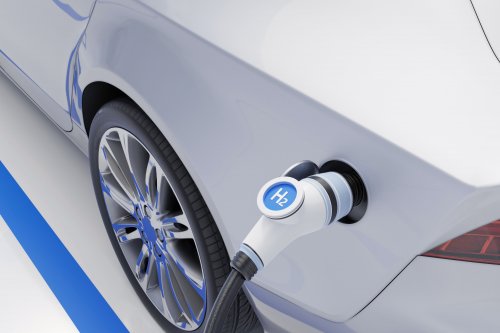The American company Universal Hydrogen conducted a test flight on a 40-seat passenger regional airliner using hydrogen fuel cells.
The flight, which the company called the beginning of the decarbonization of the world aviation industry, lasted 15 minutes at an altitude of 1,066 meters, reports Business Wire.
The material said that in the first test flight, one of the aircraft's turbine engines was replaced with an electric power plant based on megawatt-class fuel cells. The other remained a conventional engine for flight safety.

The flight was the first in a two-year flight test campaign expected to conclude in 2025 with the entry into service of ATR 72 regional jets converted to operate on water, it said.
"Today will go down in history as the true beginning of the decarbonization of the global airline industry, and we at Connect Airlines are extremely proud of the role we, as the first US carrier, will play in the development of Universal Hydrogen," said John Thomas, CEO of Connect Airlines. that ordered these tests.
The article emphasized that Connect Airlines has agreed with Universal Hydrogen to convert 75 ATR 72-600 regional aircraft to hydrogen power units with the right to purchase 25 additional aircraft.
"We are committed to becoming North America's first zero-emissions airline, and this historic flight, which uses hydrogen that can only be generated by sunlight and emits only water, is a key milestone on our journey," he added. Thomas.
The pilot of the plane said that the noise and vibration from the transmission on fuel cells is much lower than from a conventional turbine engine.
The article emphasized that the aircraft's fuel cells are specially modified for use in aviation. Thus, the power unit does not use a battery, and the fuel cells directly control the electric motor, which significantly reduces weight and cost.
"The aircraft are converted to hydrogen using an aftermarket conversion kit, which applies to the existing fleet, rather than developing an entirely new aircraft. And the hydrogen fuel uses modular pods compatible with existing cargo networks and airport cargo handling equipment, making each airport in the world is ready to use hydrogen," said Paul (Pavel) Eremenko, co-founder and CEO of Universal Hydrogen, who was born in Ukraine.
It is noted that Universal Hydrogen plans to move from regional aircraft to larger models. The production of hydrogen-powered aircraft may be the only way for aviation to get closer to the Paris Agreement's emissions targets without having to curb the volume of air traffic.
"Today opens a new chapter in the history of aviation and the fight against climate change," the article emphasized.
Earlier, EcoPolitic wrote, that the leaders of the aerospace industry consider green hydrogen to be a promising eco-fuel for airplanes, satellites and spaceships.
As EcoPolitic previously reported, NASA is looking for partners to develop the technologies needed to create a new generation of low-emission single-body airliners that will hit the market in the 2030s.




